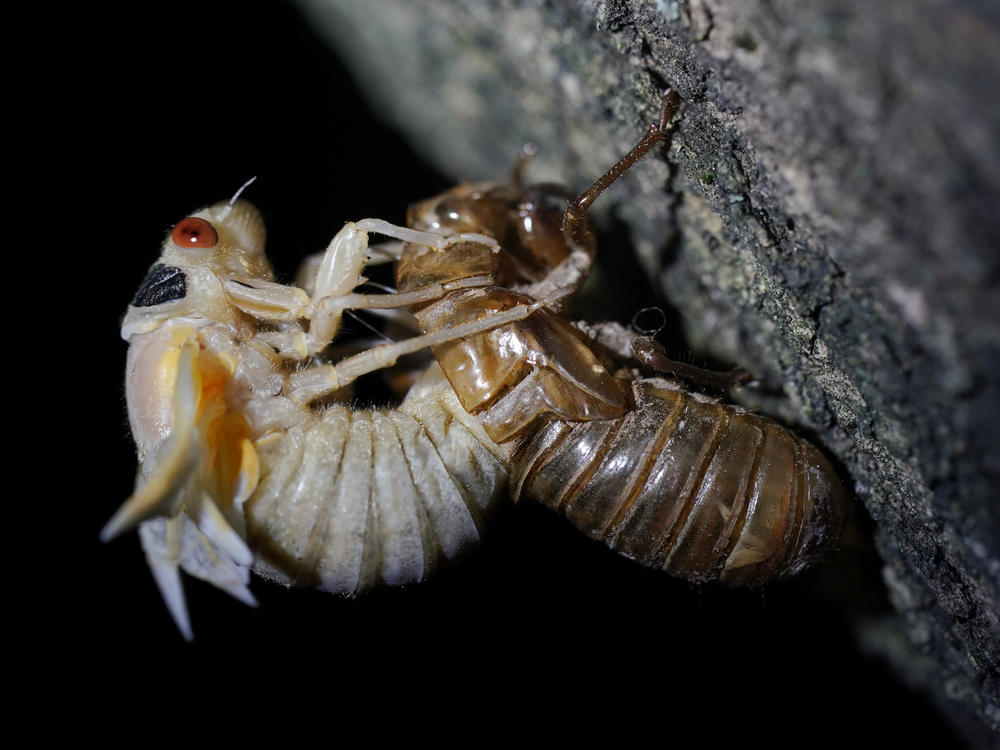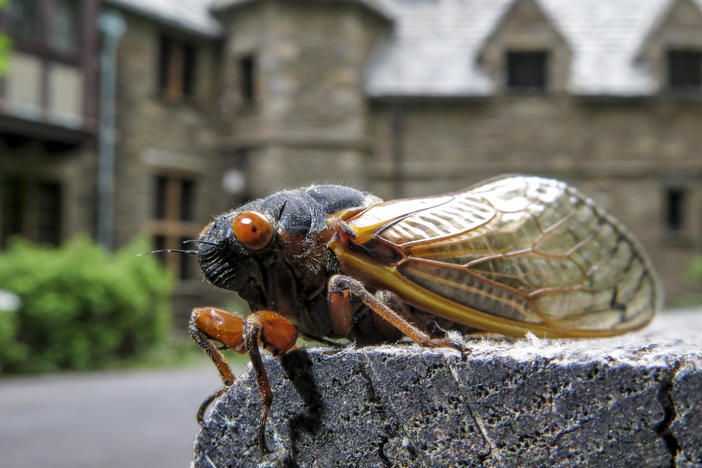Section Branding
Header Content
Billions of cicadas will buzz this spring as two broods emerge at the same time
Primary Content
Much of the eastern United States can prepare for what one entomologist described as a "spectacular, macabre Mardi Gras" this spring.
The event Jonathan Larson, an extension entomologist at the University of Kentucky, is referring to is the simultaneous emergence of two cicada broods that will erupt in states from Virginia to Illinois come late April through June.
Periodical cicadas, which have the longest known insect life cycle, spend most of their life underground in an immature nymph form before surfacing from the ground every 13 or 17 years for a brief adult life. A brood constitutes multiple species of cicadas that merge on the same cycle.
"It's like a graduating class that has a reunion every 17 or 13 years," says Gene Kritsky, professor emeritus of biology at Mount St. Joseph University and author of A Tale of Two Broods: The 2024 Emergence of Periodical Cicada Broods XIII and XIX.
Although cicadas are a valuable food source for birds and small mammals, in large numbers their deafening calls can be annoying and their carcasses littering the ground can be a nuisance. The last time the Northern Illinois Brood emerged 17 years ago, "they were out in such abundant numbers that Chicagoans were having to remove them with shovels, to clear sidewalks and roads," said Floyd Shockley, an entomologist and the collections manager for the Department of Entomology at the National Museum of Natural History.
The last time the two broods — Brood XIX and Brood XIII — emerged simultaneously was in 1803. Shockley says their surfacing makes for an "extremely rare, once-in-a-lifetime event."
Brood XIX, known as the Great Southern Brood, contains four species of cicadas and emerges only every 13 years. The Northern Illinois Brood, or Brood XIII, is on a 17-year cycle and contains three species of cicadas.
Shockley says the Great Southern Brood will start appearing in late April through the first or second week of May across 15 states, mostly in the South, running from Virginia and into Alabama and Mississippi.
As for the Northern Illinois Brood, Shockley says people will start to see these cicadas closer to mid-May through the first week of June. The brood will be highly concentrated across four states, including Illinois, parts of Wisconsin, Indiana, and a bit of Michigan.
Across the east, Kritsky says, "we'll probably see billions of cicadas" due to the dual emergence of the two broods. While you may hear or see cicadas in your area well into September, the periodical cicadas will die off by June, their song replaced by annually occurring cicadas for the rest of the summer.
Once the ground reaches the optimal temperature of 64 degrees Fahrenheit, the insects find their way to nearby trees and shed their skins, Kritsky said. It takes about four to five days for the adult males to start singing, but once they do, their songs can be louder than a jet engine.
The male cicadas "produce this chorus that attracts the females to the trees," says Larson. "Then they'll pair up and have courtship songs," singing individually to female cicadas in an attempt to persuade them to mate. After mating, the female cicada lays her eggs in a tree and then they die, littering the base of trees and leaving behind what Kritsky describes as a "delicate, rotten Limburger cheese" smell.
The cycle begins all over when the cicada eggs drop from the tree, returning to the ground for another 13 to 17 years. Although they spend years underground in an immature state, the adult lifespan of a cicada ranges only from four to six weeks.
"It's pretty much this big spectacular macabre Mardi Gras," says Larson. "It's a lot of singing, lots of paramours pairing up, and then lots of dying."
While the two broods this spring will mostly be separated by time and place, "they will overlap for several weeks," in Illinois, says Shockley. This overlap could result in some Illinois residents hearing all seven species of the two broods singing their cacophonous mating calls together, he says. Additionally, Shockley says the overlap could result in "an extremely rare opportunity for genetic crossing between 13-year cicadas and 17-year cicadas that could lead to the emergence of a new brood."
All the experts NPR spoke with emphasized that the bugs' ephemeral emergence is not harmful to humans or pets. While the sheer amount of them may be shocking if you're in certain high density areas, they won't bite or sting you, says Larson. "Your pets will probably try to eat them," he adds. "And they're going to be OK."
Shockley added not to spray pesticides on the bugs. The chemicals could impact birds and small mammals that might feed on the cicadas. "Or it could hit non-target things like butterflies and bees that you actually want to have around your home," he says.
While Larson says people may be "disgusted by the situation," he emphasized that it's a unique, beautiful spectacle of nature that you can't encounter elsewhere in the world.
Kritsky described the short-lived emergence of the cicadas as "like having a David Attenborough special in your backyard," referring to the British naturalist and broadcaster. "If you're lucky enough to live in an area where these things are going on, get your kids out there. Watch this."
Correction
An earlier version of this story transposed its descriptions of Brood XIX and Brood XIII. Brood XIX, known as the Great Southern Brood, contains four species of cicadas and emerges only every 13 years. Brood XIII, known as the Northern Illinois Brood, is on a 17-year cycle and contains three species of cicadas.
Bottom Content




